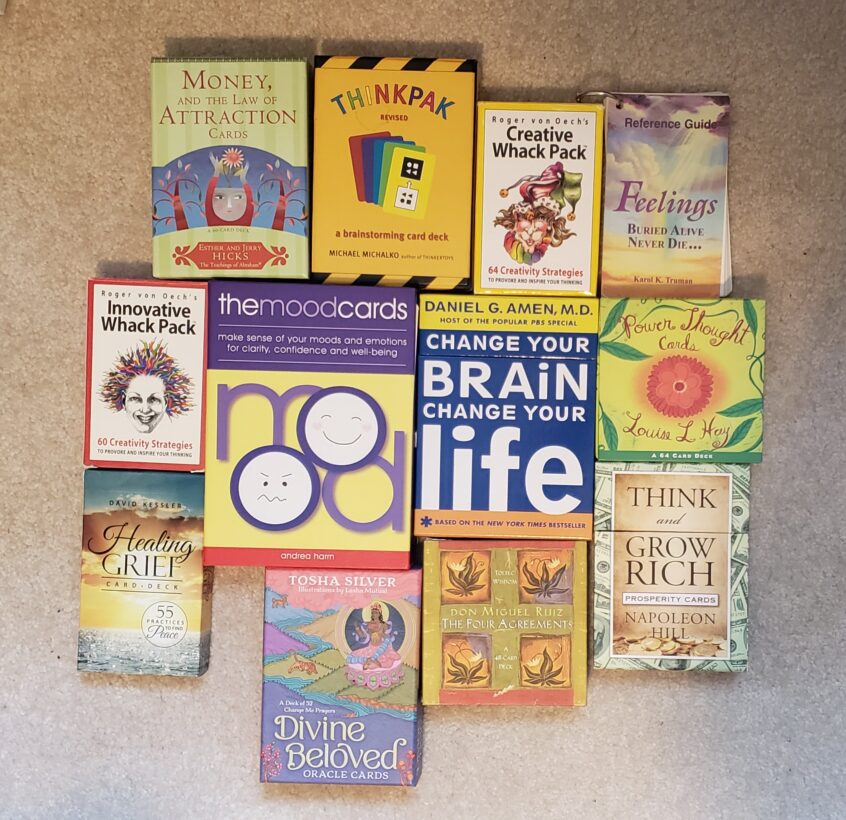If you’re anything like me, you are a constant learner. Here is an example, most non-fiction books I read, I take handwritten notes and create metacogs while I am reading them, so I can retain more of the information and hopefully be able to reference it when I need it.
Even as an adult I still make flashcards. When I am working to implement a new life tool, shift a behavior, and create a new routine I make flashcards to reference while I am in the process of learning or shifting things. At this point in my life, I don’t think about it a whole lot I just do it naturally, it is my way of being in the world. I get that not everyone else does that, but I do find it to be a very helpful tool for some of my clients.
Another really helpful tool for me is getting card decks that are connected to the books I have found most valuable. What is a card deck you ask? Typically it is a deck of cards anywhere from 35 to 75 cards. Some have art on one side and words on another. Some have words on both sides.
Here is an example of a couple of my favorite decks:
Dr. Daniel Amen’s Change Your Brain, Change Your Life
Embracing your neurological learning style means that you don’t always look like everyone else or do things like other people. So what. For many people with dyslexia or ADHD reading or learning something from a book once, is not enough to implement change in their life. It’s called applied learning and it is one of the best ways we neurodiverse brains learn.
By having cards to support what you are learning some people are better able to apply the new principles and ideas into practice.
I would love to hear about card decks that other people might have that help you.
Maybe you’ve made your own set of flashcards and are still using them, let me know the book or video you created them from.
You’re doing better than you think, keep it up.
JoyGenea
